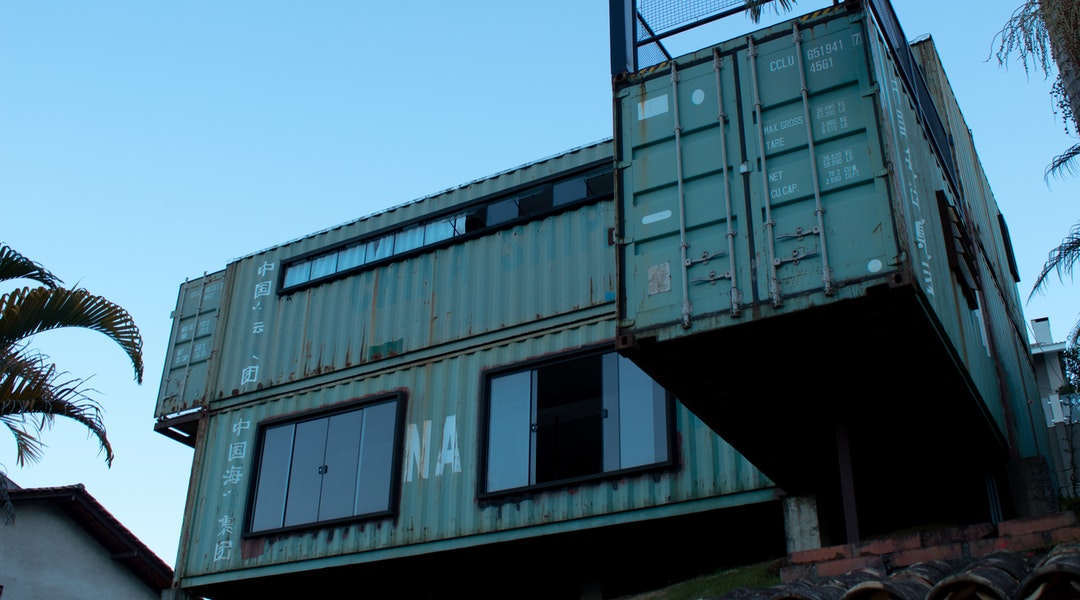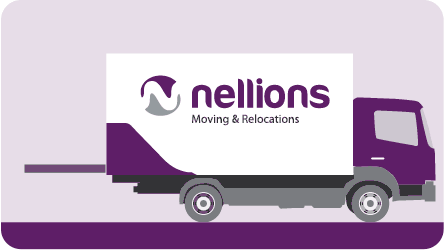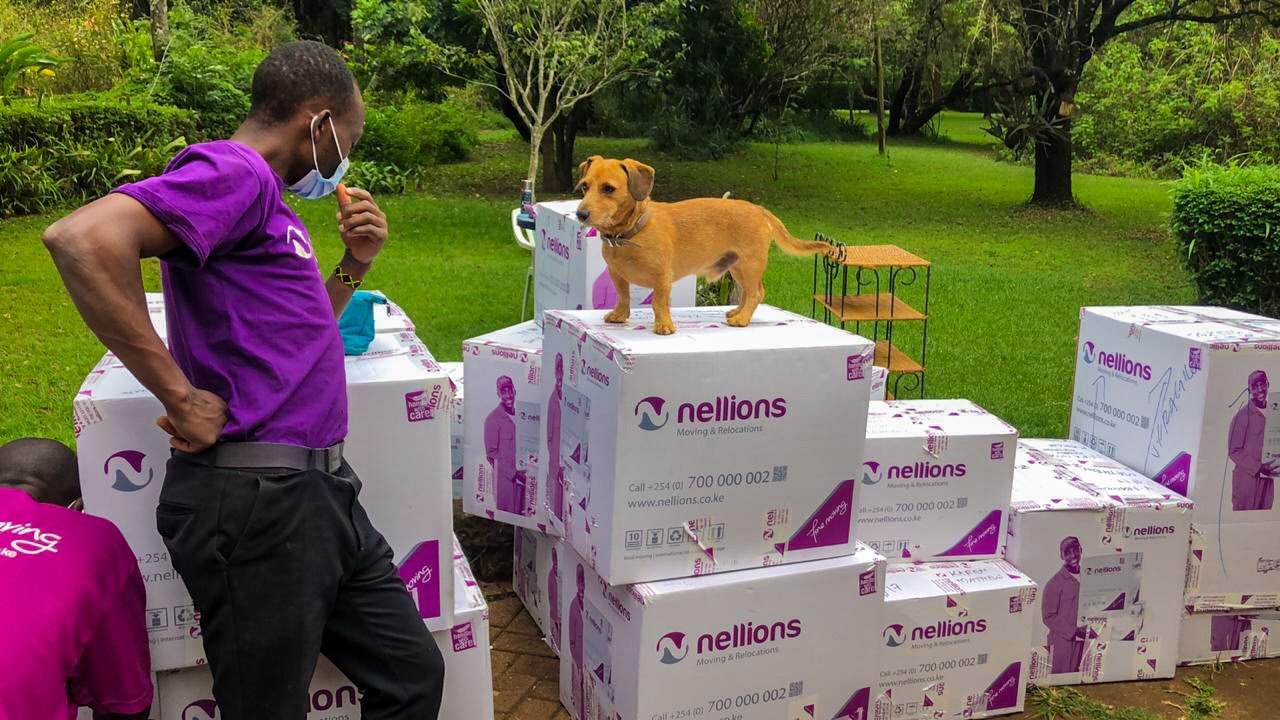Last updated on November 3rd, 2022 at 12:15 pm
Relocating from one country to another isn’t always a smooth, hassle-free process.
For instance, you might be rightfully concerned about storage space if you’re considering making a permanent move with your household goods and personal effects.
The house you’re moving into might be nearly full or there might not even be a house after all. In the latter case, you might find yourself badly in need of a storage container or even a convertible home.
Fortunately, shipping containers can solve precisely these kinds of problems.
Most shipping lines allow people to buy freight or shipping containers so they can ship out their goods from their country of origin to wherever they are moving.
Indeed, Kenyans can even buy a container for local use, whether it’s to act as a modular home, office, store, or for some other business.
When an independent individual (or even a business) owns a shipping container used for the freight of their goods, it is referred to as a shipper-owned container (SOC).
A shipper-owned container is different from a carrier-owned container (COC). COCs belong to either a carrier or container leasing (logistics) company, and they’re rented out to shippers or consignees who don’t have their own containers.
There are certain advantages of owning SOCs:
- No demurrage charges—these are levied on COCs when shippers exceed a given number of days to take their cargo from the port
- No detention charges—these are levied when shippers delay the return of empty containers beyond a specified number of days after de-stuffing (or unloading) the cargo
- No worrying about the availability of COCs—all that’s needed is to book space on a freight carrier
- Your SOC can double up as storage space
Nonetheless, certain factors can affect your decision to relocate with a shipper-owned container when making an international move:
1. Consider the Price of the Container

Container prices vary from one country to another. In fact, there are many reasons these prices vary globally, including:
- Geographical location
- Container age and condition
- Container size and customization or modification
- Shipping industry market conditions
- Applicable taxes
- Cost of delivery
It’s good to keep in mind where your supplier is located. That’s because container prices are influenced by the economy and the current price of steel in different regions.
Even geographical considerations such as direct access to open sea will affect container price. If you’re getting a container delivered to you in a landlocked country, for instance, you’ll end up paying higher transport and transit costs.
While still on the matter of cost, find out whether the country you’re moving to will tax your shipper-owned container even as it exempts your household goods and personal effects.
When it comes to the container’s condition, buying a new one will naturally cost more than getting a used one. If you go for a used one, ensure it’s ISO approved. Also, give it a thorough inspection.
The search for a suitable container that ticks all your requirements can be overwhelming. Fortunately, there are container trading platforms such as Container Xchange which can make it easier to compare container prices and features from the comfort of your home.
2. You Might Need Help in Buying the Container
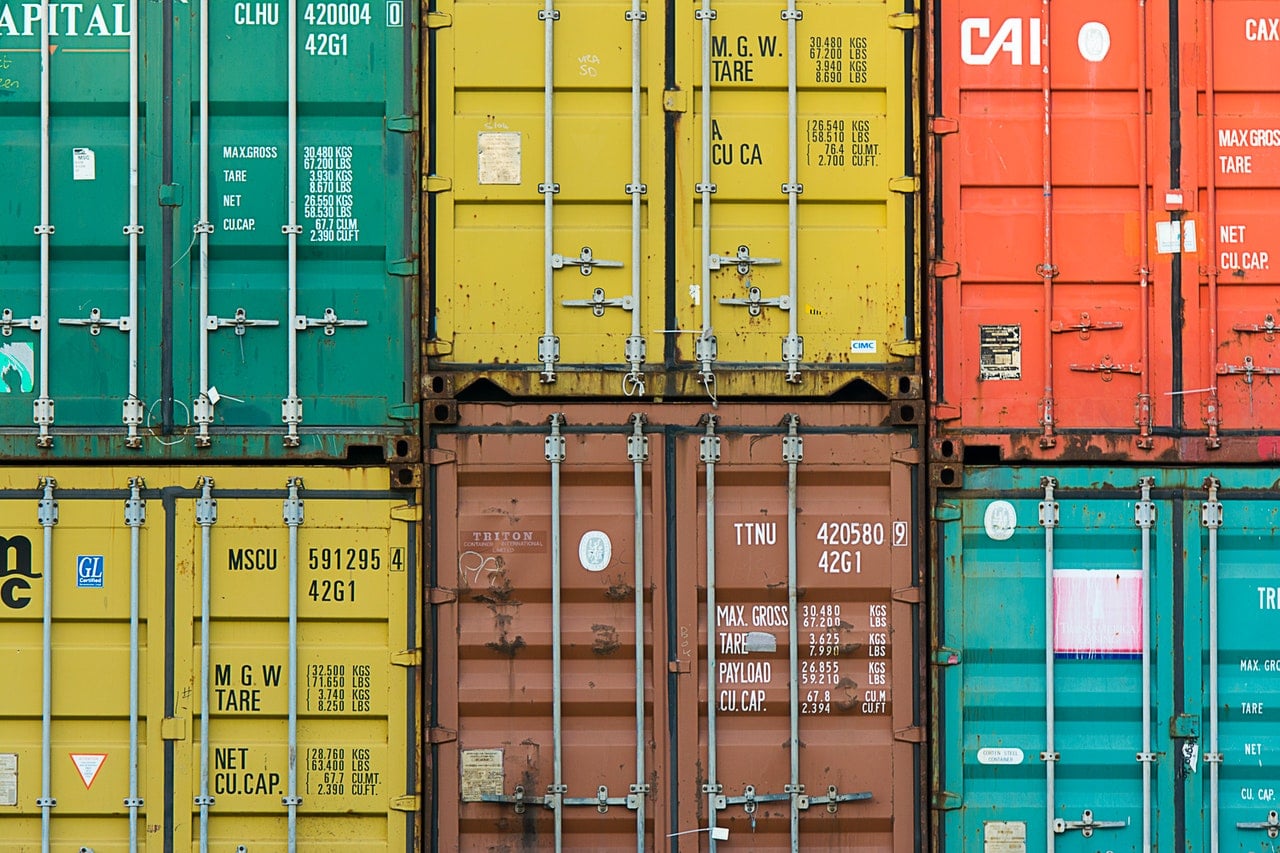
Unless you’re savvy enough or familiar with the moving and logistics industry, you should consider getting some expert advice before purchasing a container.
It’s a good idea to ask the moving company that’s handling your removal for help with buying a SOC. If they’re a professional moving outfit, they should be able to guide you through:
- Establishing whether you need to buy or lease
- Choosing a suitable container type to accommodate your needs
- Helping you decide on the most appropriate container condition
- Finding a reliable container seller
- Hiring a container surveyor
- Negotiating a good container price
- Arranging the container’s transport
In the shipping container business, asking for expert help isn’t overrated. Going in blind can result in losing your hard-earned money to fraudsters.
Indeed, a quick Google search will show you that from Canada to Australia, shipping container scams have become a global problem.
Some of the tricks that container scammers use include phishing. This is where malicious actors put up new websites and social media outlets that mimic legitimate websites. However, they provide their own phone numbers and email addresses.
Unsuspecting buyers are also usually baited with juicy discounts. Always remember that, as a rule, shipping containers are not cheap. Since they require a considerable investment, getting a ‘too good to be true’ offer likely means that you’re getting conned.
Additionally:
- Verify the email and website your container supplier is using
- Confirm their company name and address are verified in Google Maps
- Check for authentic company reviews on their social media pages
- Buy directly from a reliable container supplier whenever possible
- Do not be quick to share your banking information
- Ask to see and inspect the container on-site
These and other tips will help you avoid being the next victim of a scam. To be extra safe, however, you might want to consider asking your moving company for help.
3. Does it have a CSC Plate?
Make sure the container you buy has a CSC plate. Without it, your container cannot be accepted to sail on a sea vessel.
All ISO containers being used for international transport must have a CSC (Container Safe Convention) plate.
Since the International Convention for Safe Containers created the CSC standards, shipping container manufacturers have been attaching a CSC plate to the outside of each container they make.
This plate shows that a container has passed the technical requirements of the International Convention for Safe Containers, which is confirmed upon its completion from the factory.
New ISO shipping containers are given CSC plates that are valid for 5 years. After this period, each container must be individually assessed so that the valid timescale of its renewed CSC plate can reflect its structural integrity.
Generally, the CSC plate is treated as a container’s certificate of safety, which lets container depots and international ports know that it’s safe for transportation and handling while it’s fully loaded.
4. A SOC Will Have Different Markings from a COC
In addition to the CSC plate, shipping containers usually have other ISO and BIC-related markings.
Now, shippers can buy their SOCs from a carrier, leasing company, or container conversion company.
If a shipper purchases a container from a carrier, he or she must replace the decals on the container. The most critical elements that should be replaced are the container number and the check digit, as well as the container owner or lease company name.
For instance, SOCs bought from the Hapag Lloyd shipping line cannot have container numbers that begin with the HLXU prefix (Hapag Lloyd containers start with the HLXU prefix).
Therefore, this prefix must be changed to NONE. Additionally, Hapag Lloyd’s check digit must be changed from 9 to 6. The container owner’s name also needs to be erased.
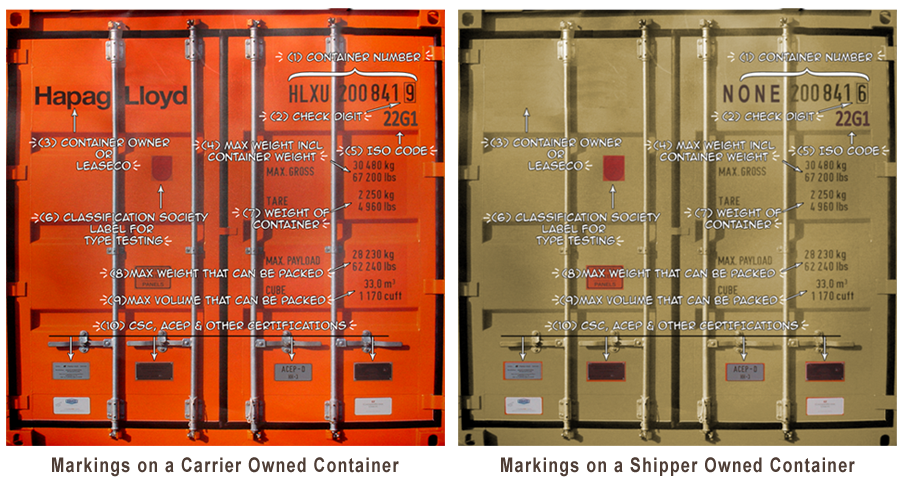
These changes are mandatory because when the container’s ownership changes, it can’t have a similar container number and logo as a SOC that it originally had as a COC. In fact, the carrier selling the container must also deregister it from its fleet.
This is part of the reason you’ll need to provide some documents for your carrier of choice to review before they can approve your SOC for shipment. These documents include:
- The SOC application form
- Images of the SOC boxes
- Image of the CSC plate
5. Shipping Lines Won’t Give Your SOC a Discount
You might enjoy some savings in demurrage and detention charges when you use a SOC, but don’t expect any incredible discounts from the shipping line of your choice.
Usually, carriers offer higher freight rate discounts for COCs, especially when your shipment is originating in a ‘high surplus’ area. High surplus areas are regions where trade imbalances result in an overstock of empty containers.
In such cases, you’ll realize significant freight rate discounts because you’re helping the carrier save some money by using their empty COCs to export your cargo.
The downside of using a COC, on the other hand, is that demurrage costs can quickly add up to hundreds of dollars per day. Unfortunately, demurrage costs are usually beyond your control. They could be the result of unreliable port workers or slow customs procedures.
6. You Must Have Certain Delivery and Safety Considerations in Mind
Containers are big, and the trucks carrying them are even bigger. They’re also considerably heavy, with an empty 20-foot container weighing about 2.3 tonnes.
For these reasons, you must think ahead on the exact location you’d like to have your container situated once it’s delivered. Also, consider whether you have sufficient space to ensure the delivery truck’s manoeuvrability.
The time to ponder about accessibility or a suitable place to store your container is not after its delivery is in progress.
Consequently, you should engage with the moving company you’ve entrusted with your removal to find out:
- How the container will be mounted or offloaded at its final destination
- Whether a forklift or a crane might be required during delivery and placement
- The safety measures in place to eliminate the chances of serious but avoidable injuries
- How much it’ll cost to ensure a safe, seamless, and painless delivery
SOCs might not work every time for every cargo on every route, but they can sure help you save on various costs.
They allow you to control the trucking and shipping of your goods with the carrier of your choice. You can also save a pretty penny in demurrage and detention costs, as well as in return trucking costs.
Naturally, there’s also the benefit of using these shipping containers as a storage unit in case you don’t have a ready storage facility. You can even turn the empty SOC into an office, business centre, or even a temporary house after you’ve emptied it.
Lastly, deciding to buy a SOC is only one step when you’re planning to make an international move. For instance, there are certain things you need to know when importing sea shipments if you’re moving to Kenya.
You also need to engage the services of a reliable moving expert you can trust to save on time, money, and energy. You certainly deserve it.




